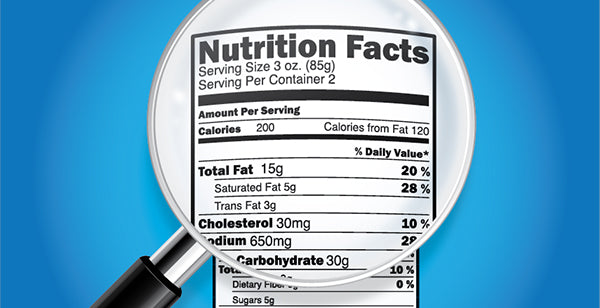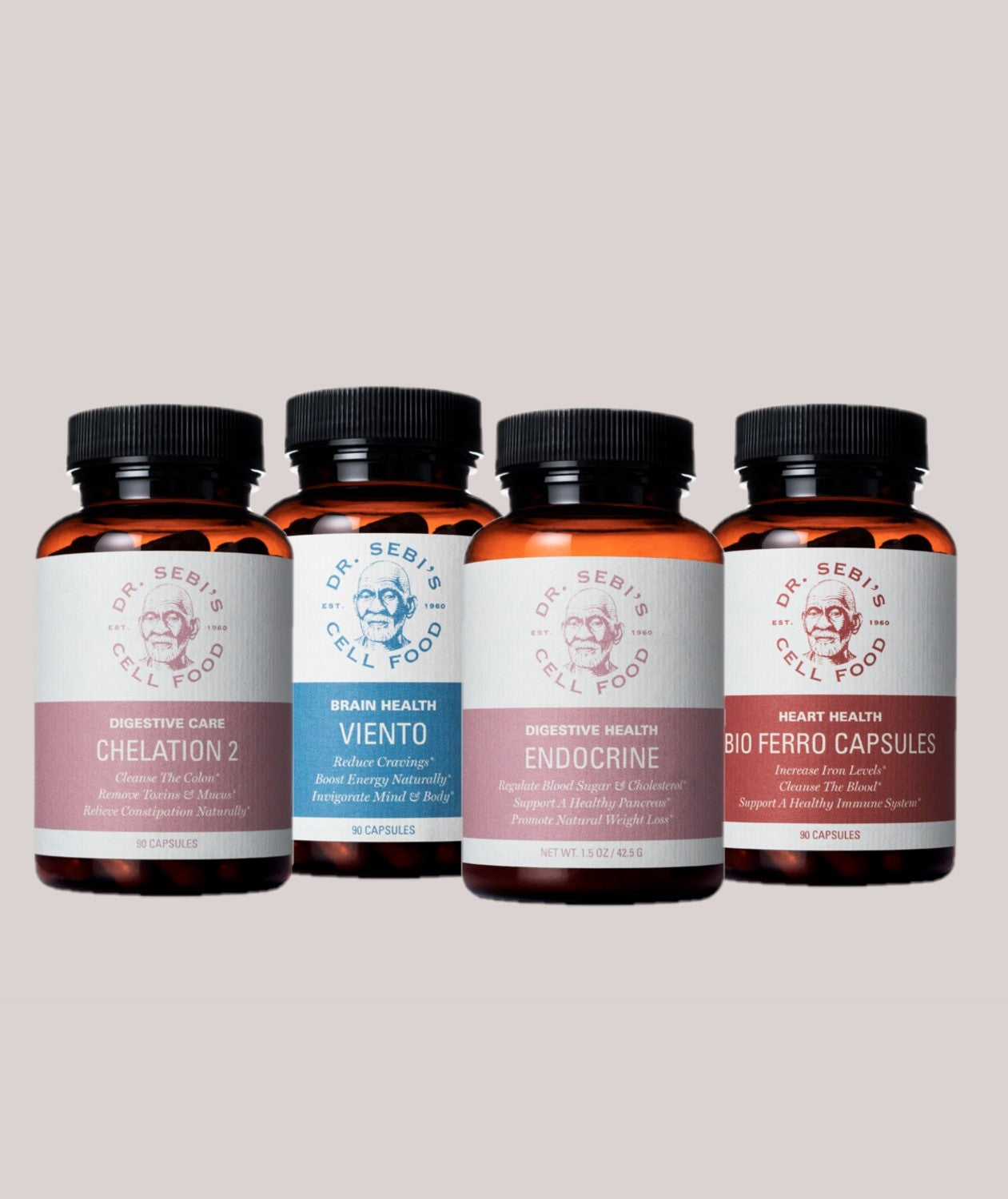As you walk through the aisles of your local grocery store or market, understanding the language of food labels is essential. Dr. Sebi's nutritional philosophy of embracing an alkaline lifestyle has shown us the profound impact that balanced nutrition can have on our well-being.
Learning to decode food and beverage labels and demystify health claims empowers you to make informed dietary choices that resonate with your body's natural harmony.
Through it all, Dr. Sebi's wisdom resonates: True health blossoms when we align with nature's harmony. By deciphering labels, embracing whole foods, and staying attuned to our bodies, we can walk this path of wellness with confidence and clarity.
Nutrition Facts Label
The most reliable way to assess a food’s true nutritional value is to read the side panel of nutrition information. That’s because — unlike certain marketing claims on the packaging — this information must adhere to guidelines from the Food and Drug Administration (FDA).
- Serving Size: This indicates the amount of food or beverage for the nutrition information that follows (ex. 1 cup). The label will also give you a total number of servings per container (ex. 4). So in this example, the entire container contains 4 cups of the product (serving size x number of servings).
- Calories: This number tells you how much energy a serving of the food provides. Calories are the basic unit of measurement for fueling your body.
- Fat (Saturated and Trans): The types and amounts of fats are crucial for heart health. Trans fat and saturated fat should be avoided, while healthier fats like unsaturated fats found in avocado or nuts are more beneficial, according to the American Heart Association (AHA).
- Carbohydrates (Fiber and Sugar): Total carbohydrates are the sum of dietary fiber and total sugars. Aim for higher dietary fiber, which is essentially for gut health, and limit sugar — particularly added sugars.
- Protein: This nutrient serves as a building block for our bodies, supporting muscle repair and growth.
- Sodium: A key consideration, especially for those mindful of their salt intake, sodium content should be limited to 2,300 mg (but ideally less than 1,500 mg) to support heart health, per the AHA.
- Cholesterol: Here, lower values are generally better for heart health, you can learn more about it here.
- Micronutrients: These vital nutrients — vitamins and minerals — play unique roles in our body's functions. Balancing their intake contributes to holistic wellness.
- Daily Value: This percentage indicates how much of a given nutrient there is in a serving of food, usually based on a diet of 2,000 calories a day.
Ingredient List
Reading through the ingredient list gives you a closer look at what exactly is contributing to the nutrition facts. Dr. Sebi's philosophy prioritizes simplicity and naturalness. Look for familiar, whole-food ingredients, and be cautious of overly processed additives or excessive artificial elements. Avoid consuming ingredients you can’t pronounce and try to find products that have a short ingredient list. Dye’s and preservatives are especially harmful to your overall health.
Health Claims on Food Labels
In the labyrinth of health claims (like, what does organic mean, really?), it's essential to interpret terminology with discernment, especially for packaged foods. Many of the claims on product packaging aren’t regulated by the FDA, rendering them essentially meaningless jargon.
Dr. Sebi's holistic principles guide us in separating food manufacturers’ marketing buzz from true nutritional value.
- Organic: A testament to mindful cultivation, organic labels indicate the absence of synthetic pesticides and fertilizers. Prioritize organic choices — particularly fruits and vegetables — to minimize exposure to harmful chemicals. A local farmers market should be your first place to find organic, try growing your own garden at home if possible too.
- All-Natural: Though a popular phrase, its meaning is not standardized. Seek products with minimal processing and recognizable ingredients.
- Whole Grain or Multigrain: Embrace whole ancient grains for their nutrient-rich goodness, while checking labels for actual whole-grain content.
- Fortified or Enriched: While these terms indicate added nutrients, these are often incorporated in a highly processed way that’s not as easily absorbed by the body as those found in whole-food sources.
- No Added Sugar: A welcome label, but be vigilant in assessing other sweetening agents that may be present (i.e., read the ingredient list).
- Gluten-Free: Valuable for those with gluten sensitivities, but remember that gluten-free doesn't always mean healthier.
- Vegan: A choice that usually aligns with Dr. Sebi's plant-based philosophy, but still, you should assess the overall nutrient content and consult the ingredient list carefully. A vegan diet doesn’t always align with the principles Dr. Sebi stipulated, so be careful.
- Hormone-Free: This label pertains to animal products, suggesting they were raised without synthetic hormones. Generally, anything that would potentially be altered by hormones is not supported by the alkaline diet.
- Low- or Non-Fat: Be mindful of potential added sugars or artificial additives used to compensate for flavor in reduced-fat products.
- Light: Often signifying reduced calories or fat, you should investigate further to understand what aspect has been modified.
- Net Carbs: A term popular in low-carb diets, this number is the total carbs minus fiber. But remember to still consider the overall nutritional value.
- Cage-Free vs. Free Range: While the term “cage-free eggs” suggests better living conditions for the hens, free-range implies more outdoor access. Either way, Dr. Sebi was not a proponent of consuming eggs.
Product Dates
Understanding product dates ensures that the food and beverages we consume are safe and retain their intended quality. These dates offer guidance on when a product is at its peak freshness, but they aren't always strict expiration deadlines.
According to the FDA, these are the three dates you’ll see most often.
- Sell by: how long the store should display the product for sale
- Use by: the last date recommended for use during peak quality
- Best if used before: when a product will be of best flavor or quality


















































1 comment
Excellent resource! I am 100% in alignment with knowledge is power. Now we have to put that knowledge into practice!! 🙏🏾